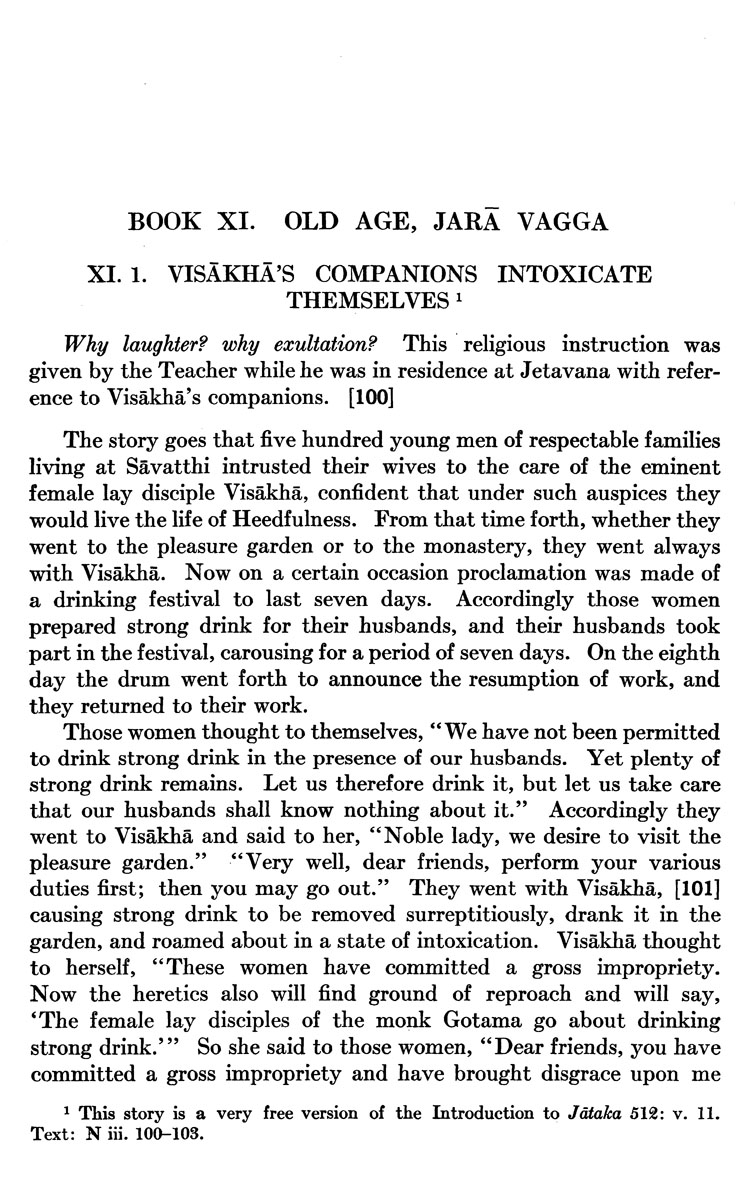BOOK XI. OLD AGE, JARA VAGGA
XI. 1. VISAKHA'S COMPANIONS INTOXICATE
THEMSELVES'
Why laughter? why exultation? This religious instruction was
given by the Teacher while he was in residence at Jetavana with refer¬
ence to Visakha's companions. [100]
The story goes that five hundred young men of respectable families
living at Savatthi intrusted their wives to the care of the eminent
female lay disciple Visakha, confident that under such auspices they
would live the life of Heedfulness. From that time forth, whether they
went to the pleasure garden or to the monastery, they went always
with Visakha. Now on a certain occasion proclamation was made of
a drinking festival to last seven days. Accordingly those women
prepared strong drink for their husbands, and their husbands took
part in the festival, carousing for a period of seven days. On the eighth
day the drum went forth to announce the resumption of work, and
they returned to their work.
Those women thought to themselves, "We have not been permitted
to drink strong drink in the presence of our husbands. Yet plenty of
strong drink remains. Let us therefore drink it, but let us take care
that our husbands shall know nothing about it." Accordingly they
went to Visakha and said to her, "Noble lady, we desire to visit the
pleasure garden." "Very well, dear friends, perform your various
duties first; then you may go out." They went with Visakha, [101]
causing strong drink to be removed surreptitiously, drank it in the
garden, and roamed about in a state of intoxication. Visakha thought
to herself, "These women have committed a gross impropriety.
Now the heretics also will find ground of reproach and will say,
'The female lay disciples of the monk Gotama go about drinking
strong drink.'" So she said to those women, "Dear friends, you have
committed a gross impropriety and have brought disgrace upon me
^ This story is a very free version of the Introduction to Jdtaka 512: v. 11.
Text: N iii. 100-103.
|








